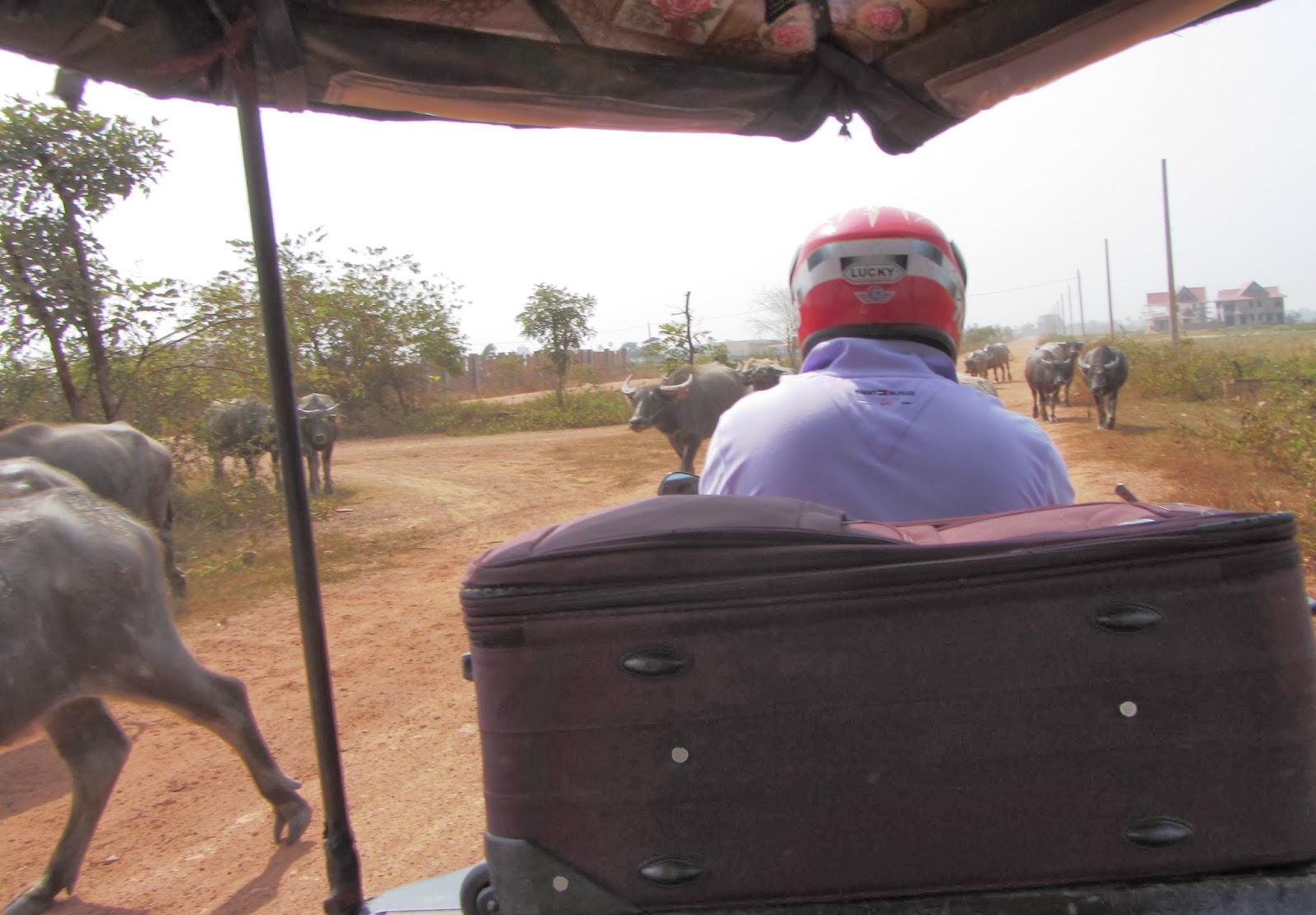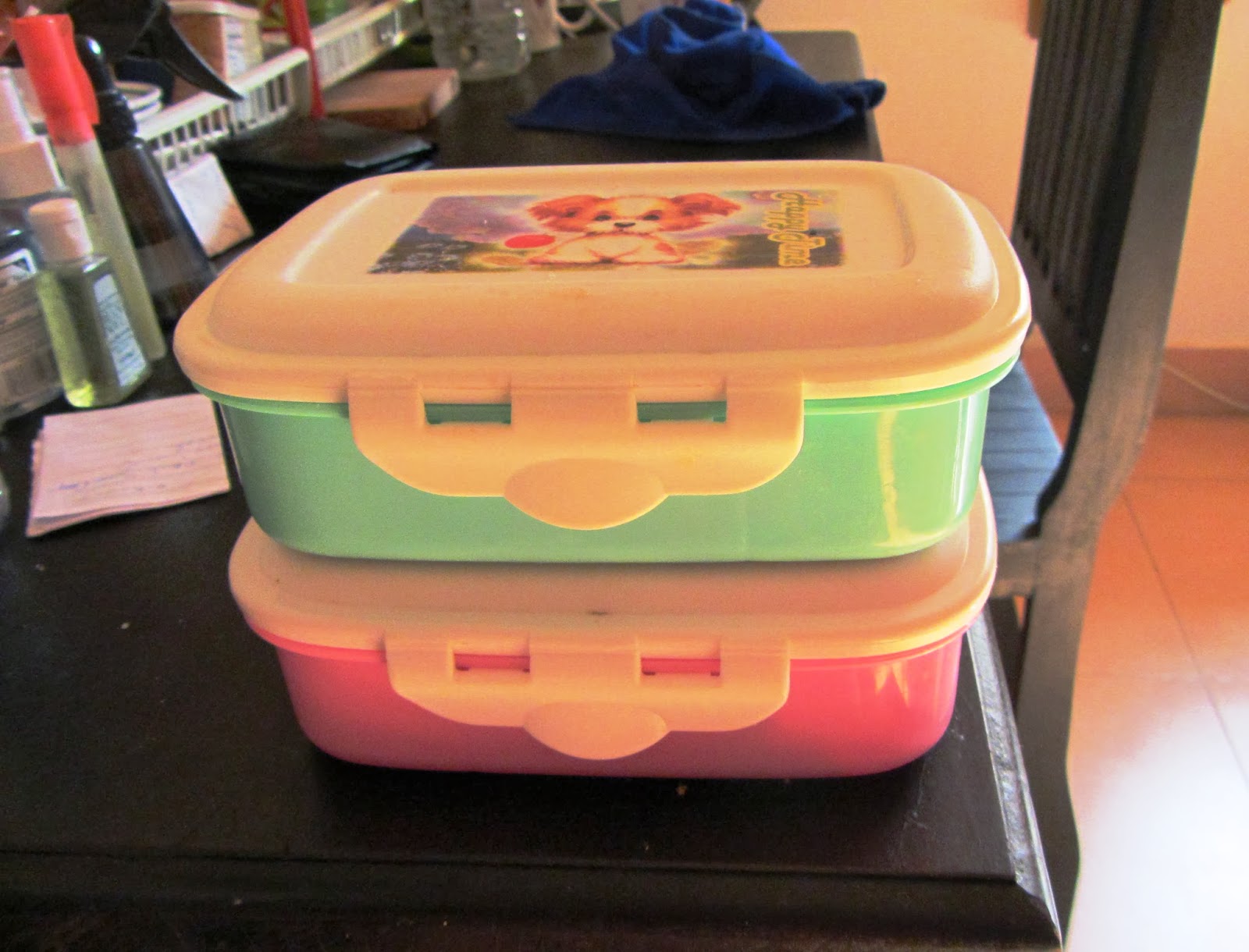...and all roads lead to Honour Village....eventually.
December to March is 'high season' in Cambodia, a time when Siem Reap sees the highest number of tourists. During this period, tuk-tuk drivers who hustle can make a lot of money taking tourists sight-seeing and to the temples. Most guesthouses have tuk-tuk drivers that work exclusively for them, and when new guests arrive, these drivers have a pretty good chance of getting their business.
Golden Takeo Guesthouse has three tuk-tuk drivers - Hom, Nark (pronounced Nah!), and On. These guys are pretty fortunate because, even during low season when fares are few & far between, they get first crack at driving volunteers to Honour Village. The round trip costs $8 per day per tuk-tuk to go to HVC, which is a good day's wage for off-season. We know we're getting a great deal, because it's a discounted rate exclusively for volunteers, and when four people share the tuk-tuk, it ends up costing us only $2 each! What a bargain!
Hom, Nark and On know the way to Honour Village so well they could probably take us there blindfolded. The most direct route travels down the main road through the busiest part of the city, past large resorts and hotels. When traffic is busy, which is almost all the time during high season, motos whiz by, buses and large trucks often bear down on us, and cars zoom past like they were practicing for NASCAR. Even though the road is well-paved and quite wide, this route will often take longer because the heavy traffic snarls at intersections as vehicles jockey for position. (In all of Siem Reap, I think there are only about eight or ten sets of traffic lights, so intersections tend to be a free-for-all).
Very often, our driver will take one of several alternate routes through the city to avoid the crush on the main road, winding down back lanes and through scenic countryside. Especially during high season, it often ends up taking less time, and the bonus is we're away from heavy traffic and get to enjoy a different, more pastoral view.
During high season, there are days when all three regular tuk-tuk drivers are booked with tourists, so the guesthouse owner ends up having to call in his 'reserves'. Occasionally, we end up with a driver who doesn't know where Honour Village is located, and to add to the confusion, sometimes he doesn't speak much English. When that happens, the guesthouse owner will give directions in Khmer, and with my limited ability with the language, we always end up just where we need to be.
The morning of New Years Eve, all our regular tuk-tuk drivers were busy with tourists. The substitute driver didn't appear to be very confident in where he was supposed to deliver us, and his English was sketchy at best. We hopped in, trusting that the guesthouse owner had given him fairly detailed directions. When he headed down one of the 'usual' back roads, we were relieved he'd decided to avoid the main route on such a busy day! As we passed familiar landmarks, a sense of comfort settled in and we felt confident that he knew where he was going after all..... that is, up until he turned onto a narrow dirt road that we'd never been on before.
At first the road was fairly smooth, with a few bumps and jostles that were tolerable. As we got further and further into the countryside, the road turned into a series of deep longitudinal ruts, baked into permanence by the blazing Cambodian sun. Although the driver drove very s-l-o-w-l-y, and tried his best to drive around the deep dips, the tuk-tuk rocked from side to side and listed so badly we feared the whole carriage would tip over. To avoid disaster, we decided to get out and walk over the rough spots, and get back in when it leveled out.
The driver suggested we turn back, but we were already so far down the road, we figured it HAD to come out to a junction soon, and we urged him to forge ahead. Besides, the thought of riding over those horrible ruts again was unbearable.
 |
You can see the deep ruts in the road.
The main road had disappeared in the distance long ago. |
 |
When the ruts got really deep, we got out and walked,
for fear of tipping over completely.
We encountered a few places
where part of the road was washed out on one side... |
 |
Another washout on the opposite side of the road.
The ruts and wash-outs that had formed during rainy season
had not been graded out, and it just seemed to get worse and worse.
We kept hoping we'd come out at some junction that we recognized. |
 |
Several times we'd get out and walk, for fear the
tuk-tuk would tip over.
Here Gordon is just getting back in.
We both wear motorcycle helmets in the tuk-tuk,
after a 'close call' a couple of years ago,
Susan also had a serious tuk-tuk accident.
If she'd been wearing a helmet,
her injuries would have been far less serious.
We know we look like dorks, buy we're safer. |
 |
Sean and Sylvia, two volunteers from the UK,
were sharing the tuk-tuk with us.
The expression on Sean's face says it all. |
 |
It felt like we were lost in the middle of nowhere,
and we just kept trying to think positively, telling ourselves
'It can't be too much farther!' |
 |
The tuk-tuk driver admitted he'd taken the wrong road.
He had no idea where we were.
We began to pass signs of civilization, and figured
it couldn't be too far now. |
 |
Power lines.
A good sign that it would join up with a main road. |
 |
...and still the rutted road stretched out
far ahead of us with no intersecting highway in sight.
We'd occasionally see a moto or a kid on a bike,
and suggested the tuk-tuk driver stop them
and ask directions, It never happened.
A billboard far off on the right got our hopes up. |
 |
Now we were passing more signs of civilization.
A barb-wire fence to keep animals in and intruders out. |
 |
An open sewer canal.
Good sign of 'modern amenities'! |
 |
The number of homes was increasing...
The road was still really rutted, so we kept getting out,
walking until it looked relatively level before getting back in. |
 |
Sean and Sylvia kept cracking jokes,
and had us all in hysterics. |
All along that long narrow dirt road, we kept looking for familiar landmarks, thinking we'd have to eventually come out somewhere we recognized. We couldn't be lost! (Could we?) We kept reassuring each other we must be heading in the right direction.
Then far off in the distance, we saw a big white house that looked very similar to one on our 'regular route'. Now we were pretty sure we were on the right track. At last, our rutted cow path intersected with a paved road. Using the white house as a marker, we told the driver to turn left, and suddenly familiar landmarks emerged.
When we arrived at Honour Village almost an hour late, our driver apologized profusely. We all said 'No, No! No problem!' (In Khmer, "Ot bpunya haa"!) After all, we'd gone on a wild adventure, and experienced a new part of the countryside we'd never seen before, all at no extra cost. One thing was sure though... we knew what road NOT to take on the ride back home.




















































